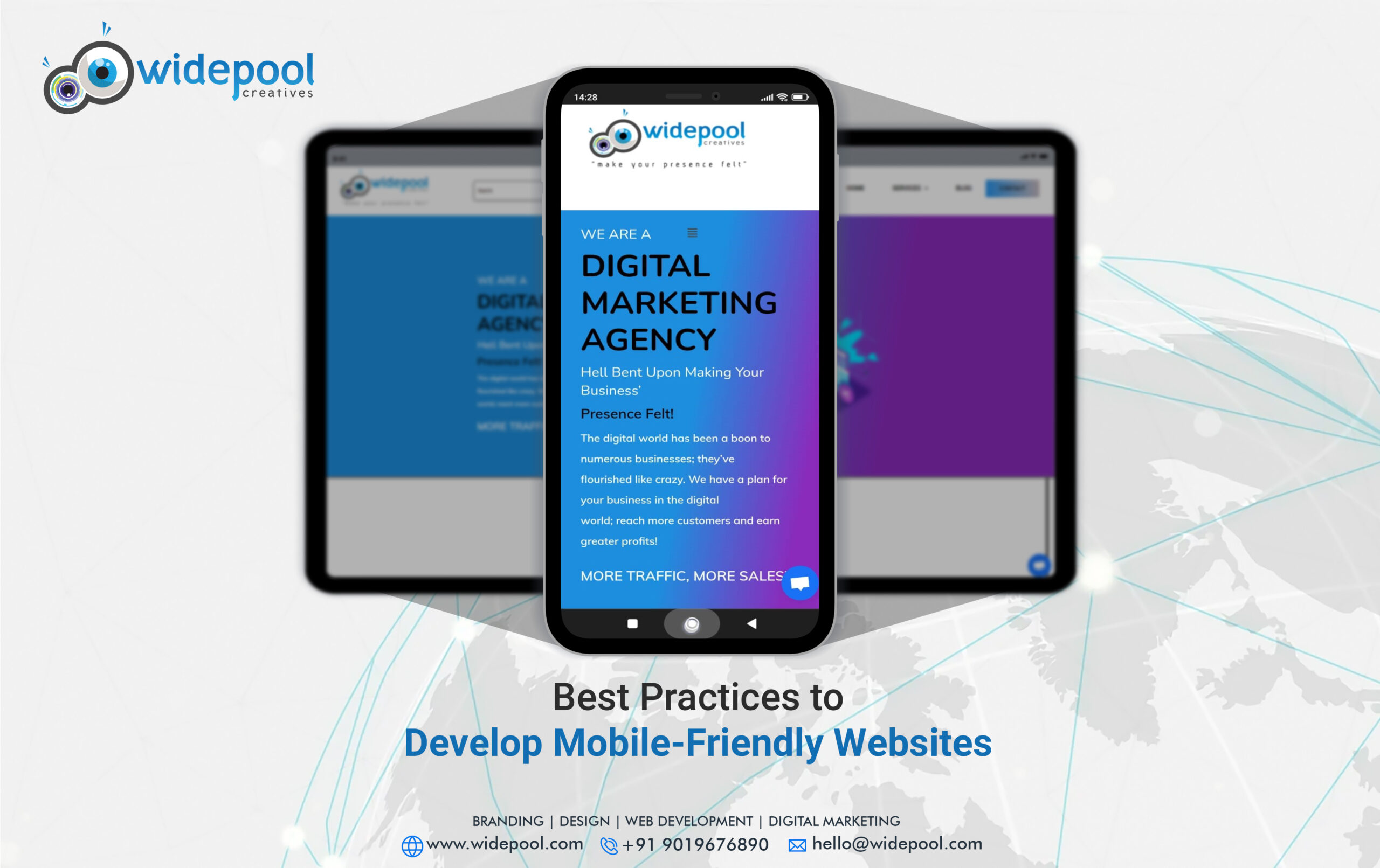Best Practices to Develop Mobile-Friendly Websites
Widepool’s Expert Team Develops Mobile Friendly Websites
Best Practices to Develop Mobile-Friendly Websites
As we all know, mobiles happen to be our future! More and more people are using their smartphones and tablets to access the internet, which means that businesses need to start thinking about mobile-friendly websites. Here are some best practices for designing mobile-friendly websites.
- Design with the mobiles in mind: Mobile-first indexing means that Google will index your mobile site before your desktop site. This is a huge shift in the way Google ranks websites, and it is one you need to be prepared for. This means designing your website with mobile users in mind from the very beginning. Don’t just try to shoehorn a mobile version of your desktop site; instead really think about what mobile users need and want from your site.
- Do adequate research if you are designing mobile site after desktop site: If you are designing your mobile site after your desktop site, you need to do your research. You can’t just assume that what works on desktop will work on mobile. Ask yourself these questions – What do mobile users want and need from your site? How will they be accessing it? What are the common tasks they’ll be trying to accomplish?
- If content is kind, mobile-friendliness is its queen! Mobile users are different from desktop users, and they have different needs; so your content should reflect that. When you are writing content for your mobile site, keep those needs in mind. Keep paragraphs short and easy to scan, use bullet points or lists when possible, and make sure your call-to-actions are clear.
- Optimize for easy navigation & clear home page: The navigation and homepage are two of the most important aspects of your mobile website. Mobile users need to be able to navigate your site easily. That means your navigation must be clear and simple, and your home page should be designed to draw them in. Make sure both are clear and easy to use. Test out different navigation approaches to see what works best for your users.
- Optimization of images to augment site speed: Images can be a major contributor to slow loading times, so optimizing them for mobile can help speed up your site significantly.
- Augment speed by reducing HTTP requests & combining files: Reducing the number of HTTP requests your site makes and combining files can help speed up your site.
- Optimizing the forms: Forms are often a necessary part of mobile sites, but they can be a pain to fill out on a small screen. Optimizing them can help make the experience better for your users.
- Typography matters! On a small screen, typography does matter a lot!
Widepool’s Expert Team Develops Mobile Friendly Websites
As the world continues to go mobile, it is more important than ever for businesses to have a mobile friendly website. That’s where Widepool comes in! Our expert team can develop a website that is optimized for mobile devices, making it easy for your customers to access your site no matter where they are. So if you are looking to stay ahead of the competition, contact Widepool today.

